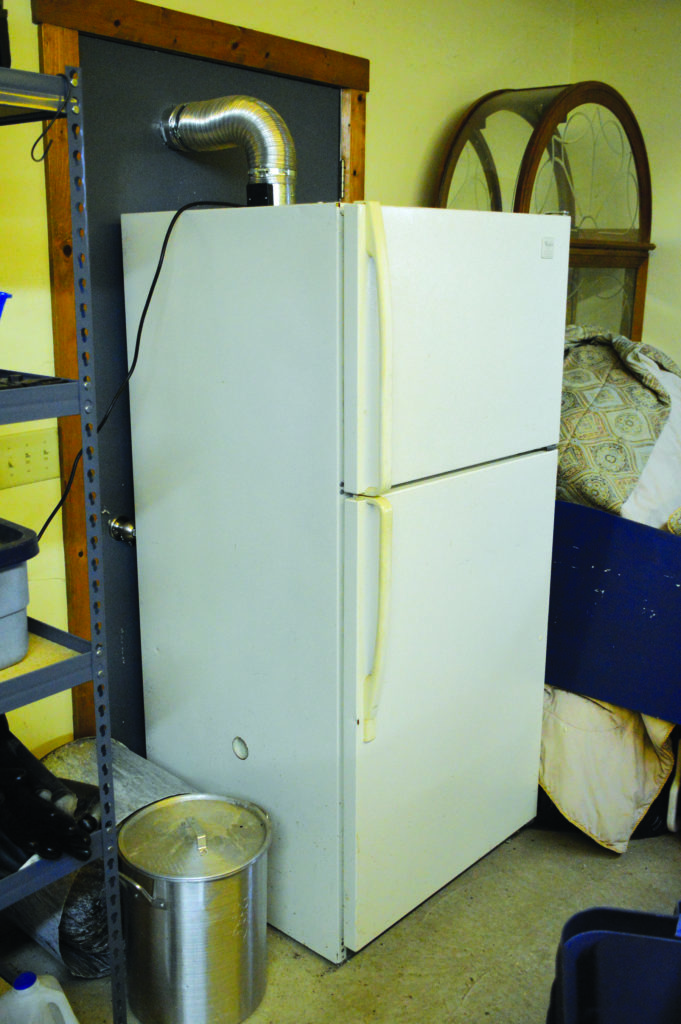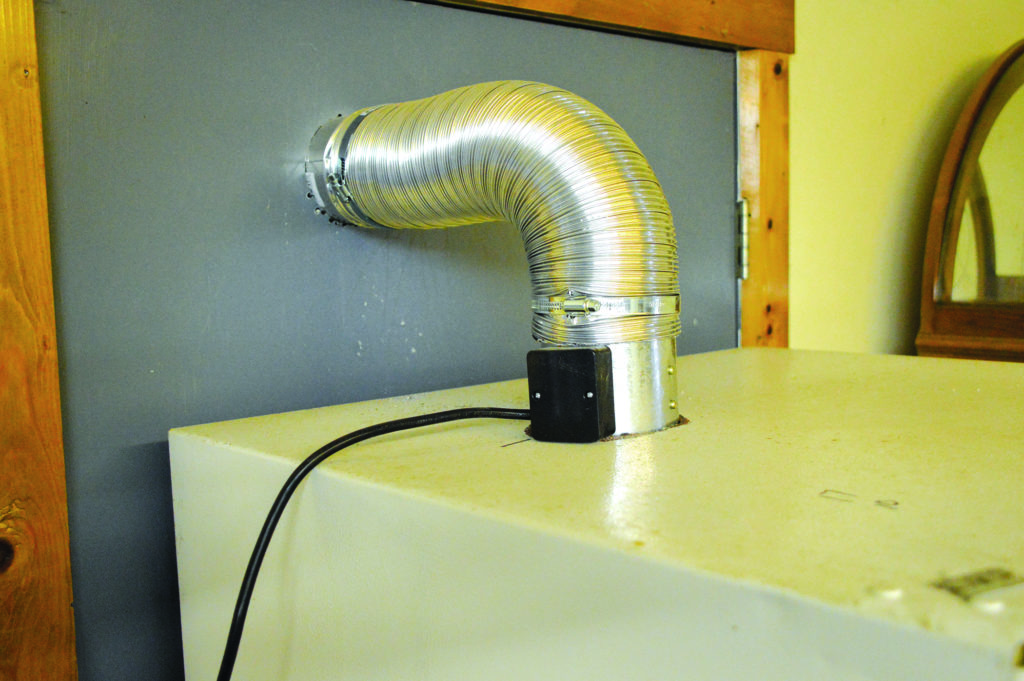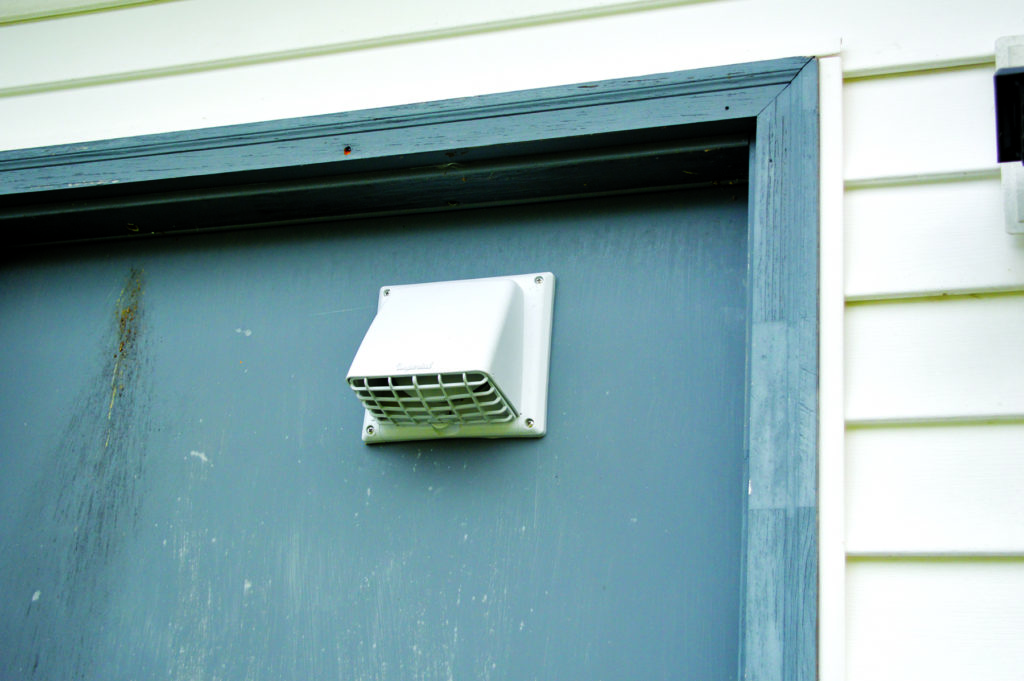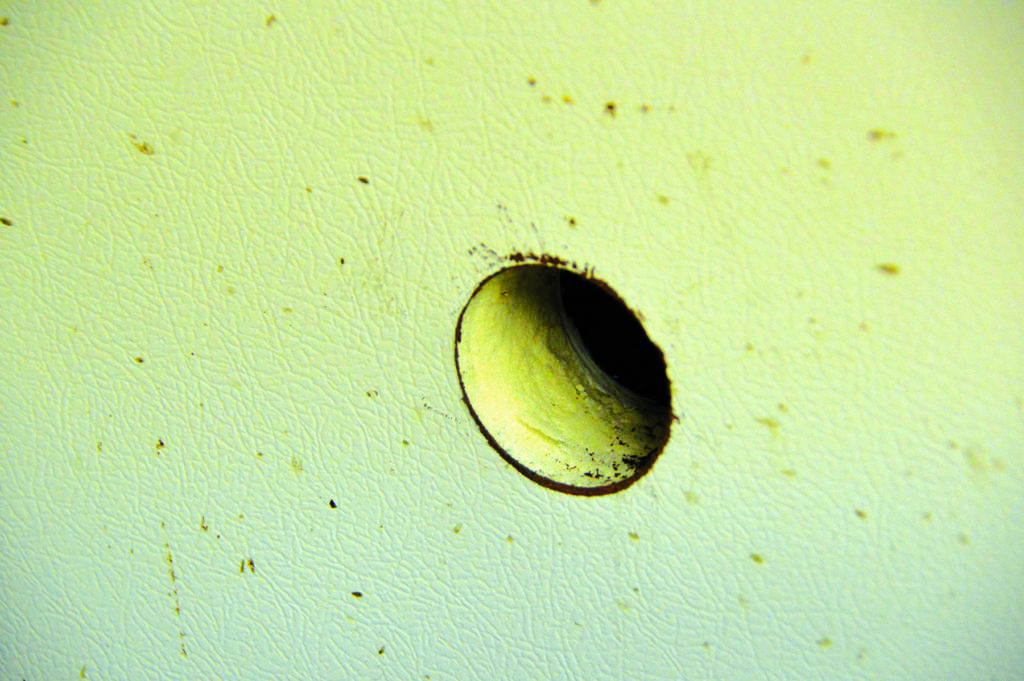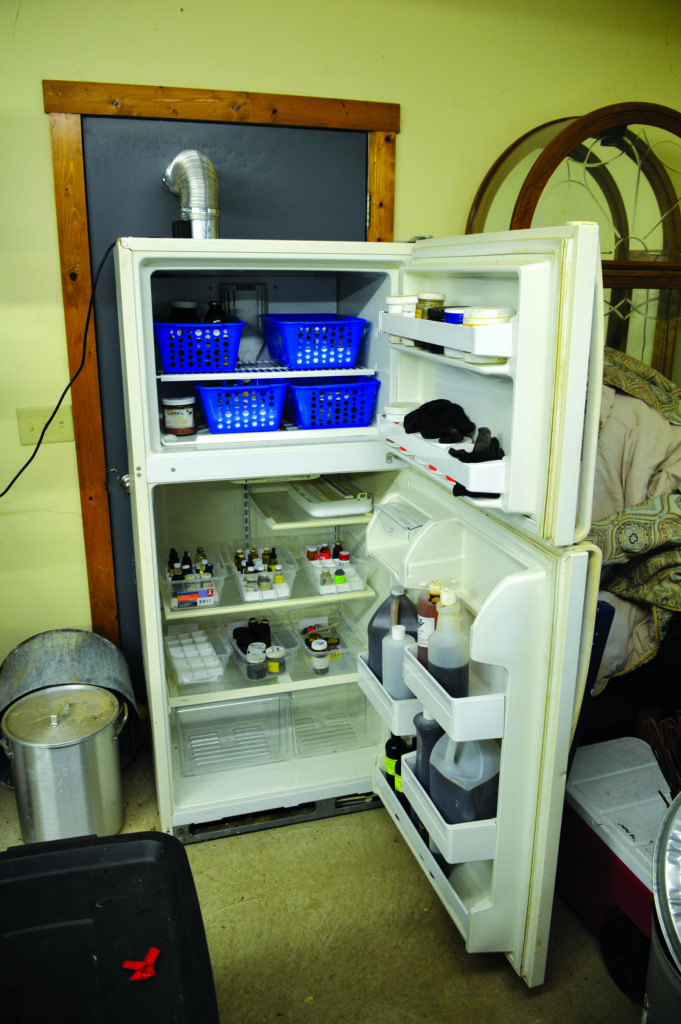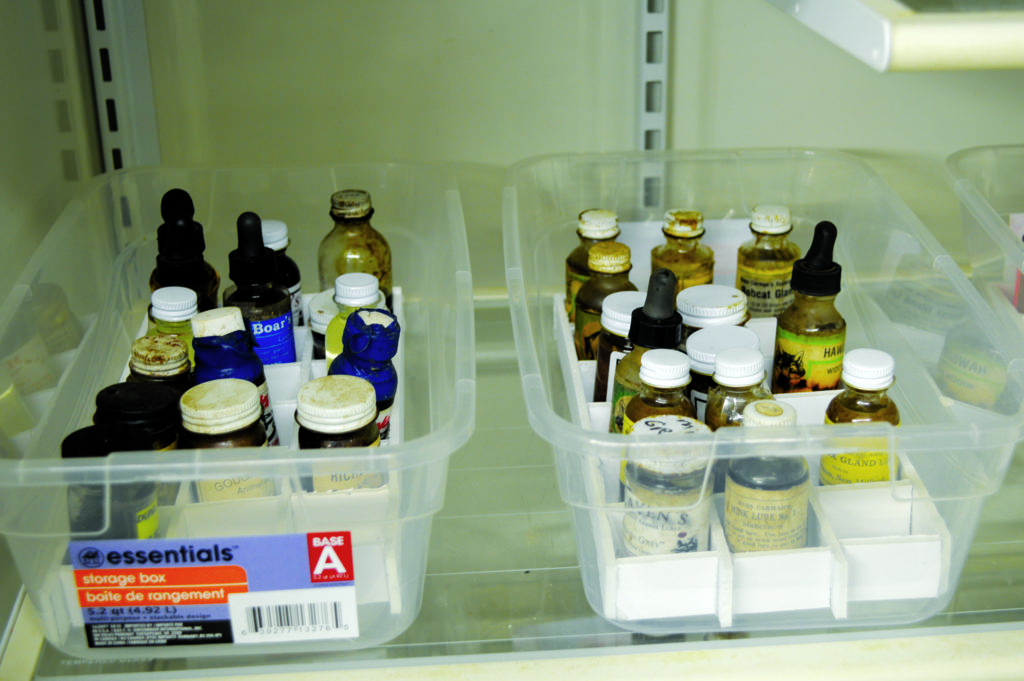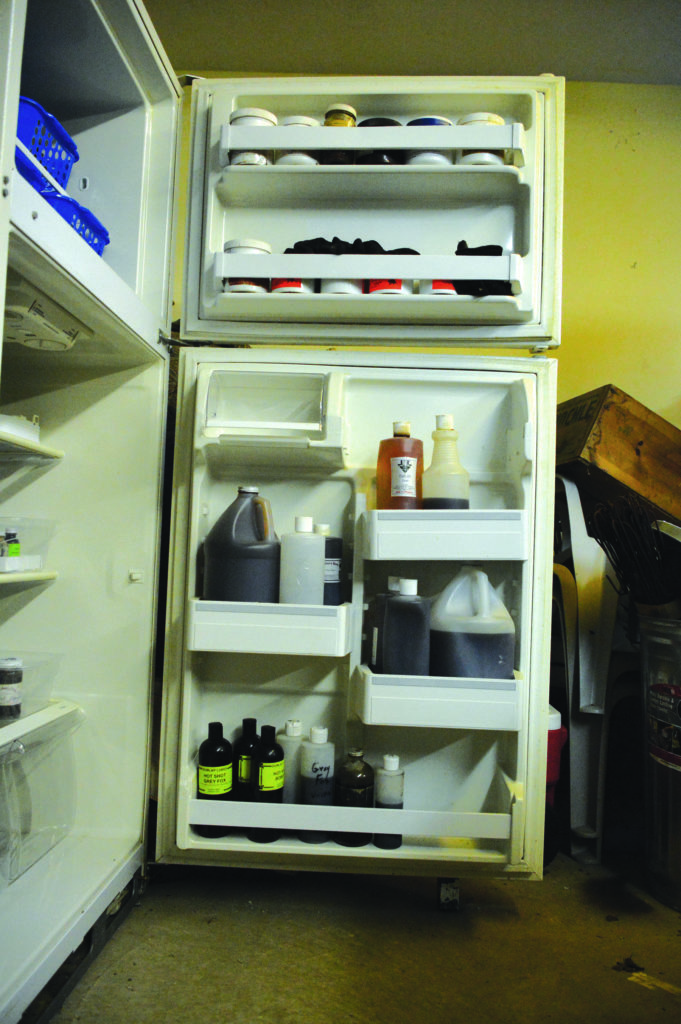Walk into my garage – my trapping shed – and you can get your socks knocked off. The air is saturated with the vapors of pure skunk essence and rotted down glands. Bottle labels of Canine Call and Hellfire promise an assault to the nose. They do not disappoint. Stepping through the door and taking a whiff was sure to get a rise from whomever was doing the sniffing.
That’s the way it used to be. My wife did not appreciate it. Frankly, even though I can smell the reeking odors all day long on the trapline and then enjoy a savory meal, my preference is to not be breathing these wicked smells if easily avoided.
Just this week on Facebook I saw where someone posted on a trapping page a question on how to store lures without them stinking everything up.
Through the years, I have watched a lot of movies and television shows. Watch a movie like Outbreak, and you see the use of a negative-pressure room. A negative-pressure room has a lower air pressure than the surrounding atmosphere. This means evil critters like contagious viruses and bacteria are continually sucked into the room, but cannot escape into the higher outside pressure. The higher pressure is continually struggling to enter the lower pressure of the room. The flow is always inward, never outward.
The simple and practical application of a negative-pressure room for combating contagions is impressive. It always stuck with me.
One day, I realized a negative-pressure application would solve the stink problem of lure storage. I decided to make negative-pressure lure storage.
I thought about building a small room for this purpose, but that was a lot of effort and extra money which wasn’t necessary. I kept my eyes open and grabbed an old refrigerator that was being scrapped. It was a fairly large one, so it would have enough storage for my needs. Refrigeration, itself, wasn’t necessary, so an old frig which no longer worked was still ideal.
I had been thinking about this for a while, so my plan was already made.
The key to this enterprise was to create negative pressure inside the refrigerator. The key component to do this was to buy a fan that could be easily installed to pull air from the refrigerator and push it, without leaks, to the outside of the building.
I bought a stovepipe fan. They come in different diameters. I settled on a 4” diameter duct fan. The 3” fan and ductwork was harder to find. The 6” and 8” sizes seemed overkill. I didn’t need a monsoon whipping through the frig, just a steady flow of air.
The refrigerator seals which kept the cold in would keep the door sealed against air leaks. Starting with the air flowing in, I drilled a 2” diameter hole in the side of the refrigerator about a foot above the bottom. This would let air get sucked into the bottom of the frig.
I was prepared to drill another 2” hole between the bottom and top compartments of the refigerator, but there was already an opening molded in the frig’s back which allowed the cold air from the upper freezer compartment to flow down into the lower refrigerator compartment. So, no drilling was necessary here, and the air would be sucked from the lower compartment to the upper compartment.
A 4” diameter hole was then drilled in the very top of the refrigerator. The 4” piece of duct with the fan built in was seated in this hole.
A 4” hole was then drilled through a metal door in the side of the garage behind the final resting place of the frig. The garage had two back doors. This particular door was extra and already secured so it couldn’t be opened.
Flexible metal hose was used to connect the fan duct to the outside duct in the door. It was easier to maneuver than trying to cut and insert solid pipe.
This was all it took.
The fan was plugged in and it hasn’t been turned off in two years. The garage is sweet smelling – unless I leave a new shipment of lure setting out on the table.
This is not a laboratory-safe, negative-pressure storage system. Fortunately for the trapper seeking to relieve his nose, it is inexpensive and does an excellent job.
An equal benefit of using an old refrigerator is the organization it allows. I used plastic boxes in the main compartments for lure storage. I hate bottles falling over, so made grids of foamboard and hot glue that fit in the boxes. They were spaced to hold 1-ounce, 2-ounce, and 4-ounce bottles. The door shelves hold bait jars and up to gallon-sized bottles of urine and fish oil.
All in all, a negative-pressure refrigerator solves a lot! •

